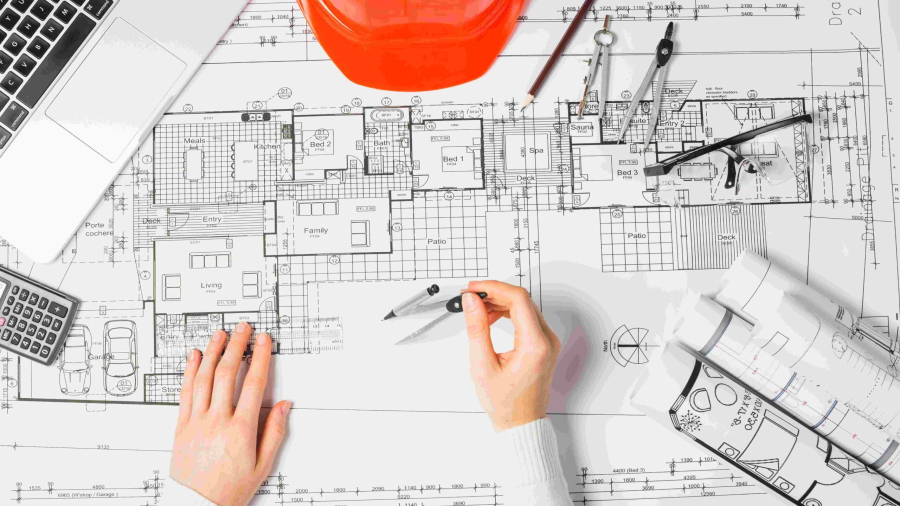Hello readers! Welcome to our comprehensive guide on the role of architects in construction projects. Whether you’re a homeowner planning a renovation or a developer embarking on a large-scale construction project, understanding the importance of architects is crucial. In this article, we will delve into the various aspects of an architect’s role, their responsibilities, and how they collaborate with other professionals to bring projects to life. So, let’s get started!
Before we dive into the specifics, let’s first define the role of architects in construction projects. Architects are highly skilled professionals who are trained to design buildings and oversee their construction. They bring their creative vision, technical expertise, and knowledge of building codes and regulations to the table. Their role is not only limited to designing aesthetically pleasing structures but also to ensure functionality, safety, and sustainability.
I. Understanding the Architect’s Role:
Architects have a wide range of responsibilities, including but not limited to:
1. Designing: Architects develop innovative design concepts that meet the client’s needs and project requirements. They create initial drawings, sketches, and 3D models to visualize their ideas.
2. Planning: Architects collaborate with clients, engineers, and other professionals to determine the best approach for a project. They consider factors such as site conditions, budget, and environmental impact.
3. Problem-solving: Architects are problem solvers. They anticipate potential challenges and find creative solutions to overcome them. They have a keen eye for detail and an ability to balance functionality with aesthetics.
4. Project management: Architects play a vital role in managing construction projects. They oversee the entire process, ensuring that construction is carried out according to design intent, quality standards, and timelines.
II. The Pre-construction Phase:
The pre-construction phase is where architects lay the foundation for a successful project. During this phase, architects are heavily involved in understanding client needs and requirements. They conduct comprehensive site analyses, considering factors such as topography, climate, and building codes.
Architects collaborate closely with clients to develop a clear understanding of their vision and goals. They engage in discussions about project scope, budget, and timeline. This collaboration helps architects align their design concepts with the client’s expectations.
Once the requirements are established, architects begin creating design concepts and initial drawings. They explore different options and present them to the client for feedback and approval. This iterative process ensures that the final design reflects the client’s vision while taking into account practical considerations.
III. The Design Development Phase:
In the design development phase, architects refine their designs based on client feedback. They incorporate structural, electrical, and mechanical systems into their plans, ensuring that all building components work harmoniously together. This phase requires close collaboration with engineers and other specialists.
Architects work hand in hand with structural engineers to ensure that the building’s structure is safe, stable, and able to withstand various loads and forces. They coordinate with electrical and mechanical engineers to integrate systems such as HVAC, plumbing, and lighting into the design.
During this phase, architects also focus on sustainability and energy efficiency. They incorporate green building practices and technologies, such as passive design strategies, solar panels, and rainwater harvesting systems.
IV. Construction Documentation:
Accurate and detailed construction documentation is essential for the successful execution of a project. Architects are responsible for creating construction drawings and specifications that provide instructions for contractors to follow.
Construction drawings include floor plans, elevations, sections, and details that communicate the design intent. Architects ensure that these drawings are clear, concise, and consistent, leaving no room for ambiguity. They specify materials, finishes, and construction techniques to ensure the desired quality and aesthetic outcome.
Architects also create specifications, which provide detailed information about materials, installation methods, and performance requirements. These specifications help contractors understand the project’s requirements, allowing them to procure the right materials and execute the work accurately.
V. Project Management and Supervision:
Once construction begins, architects take on the role of project managers and supervisors. They visit the construction site regularly to monitor progress and ensure that the work is carried out in accordance with the design intent and building codes/regulations.
Architects act as a bridge between the client and the contractor, addressing any issues or changes that arise during construction. They make critical decisions, review shop drawings and material samples, and provide clarifications to ensure that the project stays on track.
Architects also play a crucial role in quality control. They inspect the workmanship, ensure compliance with specifications, and address any deviations or deficiencies promptly. Their vigilance during the construction phase ensures that the final product meets the desired standards.
VI. Conclusion:
In summary, architects are key players in the construction industry. Their expertise, creativity, and attention to detail shape the built environment we live and work in. From the pre-construction phase to project management and supervision, architects oversee every aspect of a project, ensuring its success.
Next time you admire a beautifully designed building, remember the architect behind it. Their role goes beyond aesthetics; it encompasses functionality, sustainability, and safety. So, let’s appreciate the valuable contributions made by architects in shaping our built environment.

